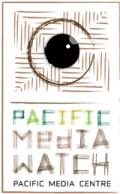
Madeleine Grimshaw
AUCKLAND (Te Waha Nui/Pacific Media Watch): The journalism school at the Southern Institute of Technology (SIT), named after the celebrated local foreign correspondent Peter Arnett, has closed due to a lack of enrolments.
Over the last four years there has been an average of only six graduates a year and only one student graduated at the end of 2014.
The school took the name of Riverton-born Peter Arnett who was awarded the 1966 Pulitzer Prize in International Reporting for his work in Vietnam. He was also a leading correspondent for the CNN network.
He retired in 2007 and now teaches journalism in China.
Senior tutor Paddy Lewis said a majority of students who started the SIT course dropped out half-way through for a variety of reasons.
“We were starting off the year with anywhere between 15 and 20 students, but there was a huge drop-off at the end of the first semester. We were ending up at the end of the year with less than half of that.
“Most of them didn’t feel comfortable in the journalist role; being bold and asking questions. A lot of them did not see it as a valid career option.”
Lewis added that unfortunately only a small component of the diploma was based around journalism in a digital environment.
He said tutors at SIT inserted aspects of digital journalism into the course – even though those components were not part of the unit standards that the diploma comprises – because they felt it would increase the graduates’ chance of getting a job in the industry.
Digital training
Megan Richards of Competenz, the industry training board that is responsible for designing and administering journalism qualifications, said the lack of digital training in the diploma was being addressed.
“We are aware that the industry is ever changing and we are due for a review of the qualifications this year, where we will address the changing digital environment in relation to the diploma.”
Richards said enrolments in the National Diploma of Journalism had been increasing overall around the country, although she did not give exact numbers.
“From my observation of the industry, there seems to be a very healthy appetite for journalism training.
“Obviously there will be highs and lows in enrolments, but lately we have had an increase in enrolments across New Zealand.”
The Western Institute of Technology in Taranaki is also struggling with low numbers. It has had to postpone the start of its journalism programme from March to July this year, because not enough students have enrolled in the course so far.
AUT University in Auckland, however, has had increasing enrolments in journalism in the last 8 years.
Helen Sissons, curriculum leader of journalism at AUT, said that the course still sees a huge interest in journalism as a career, and that the papers are constantly being developed to accommodate the ever-changing media environment.
“We have actually had to increase the numbers of people that we let into the course. When I started in 2007 we were letting in around 30, then we had to increase it to 40 and this year we have 50 students.”
AUT runs a three-year Bachelor of Communication Studies degree with a major in journalism and a Post Graduate Diploma in Communication Studies.
Madeleine Grimshaw is a student reporter for Te Waha Nui.
This work is licensed under a Creative Commons Attribution-NonCommercial 3.0 New Zealand Licence.




